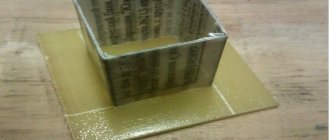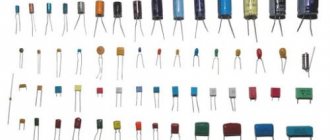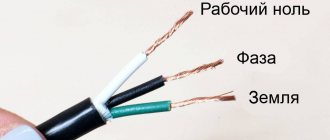Design features
Flat and shaped screwdrivers have one thing in common - the design of the tool. It consists of a round metal rod with a tip and a handle.
Kernel
Indicator screwdriver - how to use it correctly
The steel axis is the part that transmits the force of the hand from the handle to the tip of the screwdriver. The material for this is especially strong steel. Products differ in the length and thickness of the rods, the cross-section of which can be round or multifaceted.
Important! The rod can have different lengths, diameters and cross-sectional shapes. Standard length is 100-200 mm. The shaft is usually coated with nickel or chrome to protect against corrosion. The rods are also made of stainless steel.
Lever
This part is mainly made of plastic. The quality of the material affects the durability of the handle. Modern handles of high-quality products have non-slip rubberized inserts, a finger rest, and a large area for hand grip and palm rest.
Also at the bottom of the handle a transverse through hole is made to enhance torque. A rod is inserted through it to obtain additional force.
Professional OS on the handles have gel inserts that fit tightly to the palm, which ensures maximum transfer of force to the sting.
Sting
The effectiveness of the sting largely depends on the quality and strength of the tip material. Tips made from C-2 tool steel are considered high-quality and reliable tips. Particularly durable tips are made from molybdenum-vanadium alloy.
Flat head screwdriver
What should the core be?
The rods come in square, round or hexagonal shapes . They also have different lengths , but whatever screwdriver you need, the hardness of its shaft according to GOST should be 47-52 HRC. This is an indicator of hardness at which optimal strength is maintained with internal viscosity, which prevents the destruction of the rod when twisted with great force. If its strength is less than 47 units, then during operation it will simply bend, and if it is more than 52 units, then it may burst. Rods, like tips, are made from chrome vanadium steel . To prevent the formation of corrosion, the rod is coated with a galvanized protective layer.
Markings and dimensions of a slotted screwdriver
Pulse soldering iron gun
Branded products have markings placed on the longitudinal surface or on the end of the handle. It meets the requirements of the international classification of hand tools. If you need a tool for household needs: unscrew and tighten screws, then you need to understand what the marking of the tool means: SL , PH , PZ :
- SL – regular flat spline;
- PH – Phillips screwdriver;
- PZ – the same with the presence of thin ray lines.
The marking can be in the form of a circle, inside which the pepper section of the tip is depicted. So, for example, flat screwdrivers are indicated by a stripe, Phillips screwdrivers - by a cross in a circle. All indicator instruments have a flat tip. Accordingly, shaped screwdrivers in the marking are displayed by the type of tip profile.
Hardware with various slot shapes
Around the circle, the manufacturer indicates the dimensions of the slot and the length of the rod. Marking with a circle with a stripe inside it. The dimensions of a slotted screwdriver are marked on the rim: 1.2 x 6.5 x 125 mm means that this is a flat screwdriver, designed to work with screws whose slots have dimensions of 1.2 x 6.5 mm, the length of the rod is 125 mm.
A marking with a cross containing the inscription PH 1 x 80 mm means a Phillips screwdriver of the following dimensions: 1 – fastener head diameter number, shaft length – 80 mm.
Cross School
What is the difference between screwdrivers with PH and PZ bits?
Most craftsmen know that screws differ in head size and a separate screwdriver is needed for each size, but not everyone understands the difference between a PH bit and a PZ bit and therefore cannot choose the necessary tool.
There are two types of Phillips screwdriver tip profiles and screwdriver bits. The most important difference between a PZ bit and a PH bit is the profile of the edges of the screwdriver tip:
- Phillips (abbreviated PH). This is the first type of such tool. The screw head has two grooves perpendicular to each other. Due to the design features, the contact area between the screwdriver and the screw is small, which increases the risk of damage to the slot and the tool.
- Pozidriv (abbreviated PZ). The Podriv bit has additional notches on the edges and a modified tip sharpening angle. The Pozidriv profile is an improved Philips profile and requires less effort to hold the screwdriver in the screw head.
To some extent, these tools are interchangeable and a PZ bit can be used to unscrew a PH screw and vice versa, but this approach to choosing a screwdriver has one drawback. The wrong type of bit does not fit tightly into the bolt slot, which increases the risk of damaging fasteners and tools. Labor productivity and tightening force also decrease.
Therefore, it is important that the profile of the screwdriver tip matches the profile of the screw slot. You can distinguish them by their appearance:
- PH - There are only two slots on the head of the screw, located perpendicularly. The bits have the letters RN on them.
- PZ - in addition to the main slots, the screw head has additional notches. The bit has the letters PZ, additional notches and a different tip sharpening angle.
Markings on screwdrivers are applied to the shaft and (or) handle. For example, the inscription PZ1x80mm indicates the following parameters:
- PZ - Podriv tip profile;
- 1 — tip size first;
- 80 mm - rod length 80mm.
For home use, it is usually enough to have PZ and PH bits of “1” and “2” sizes, 4 pieces in total. When making furniture, you can add a HEX 4mm hex bit to them.
| Information! Some “experts” use a flat-head screwdriver to tighten Phillips-head bolts. This approach will almost certainly lead to breakage of the slot and damage to the tip. |
Types of screwdrivers
Electrician's kit - what tools are included?
What types of screwdrivers there are can be represented by a fairly large list. You should consider popular and highly specialized types of screwdrivers.
Dielectric
To work with electrical equipment, use a dielectric screwdriver. It does not allow current up to 1000 V to pass through it. The entire instrument is covered with special plastic up to the tip. Electricians use such OSHs to work in electrical cabinets and switchboards.
Tool with dielectric coating
Reversible
The sonic screwdriver is equipped with ratcheting mechanisms. When the tip rotates, the ratchet makes a ratcheting sound. The tool can only rotate in one direction. To turn on the reverse mode, move the lever. Thanks to this device, the master tightens or unscrews the screw without removing the tip from the fastener slots. Reversible tools are otherwise called minus screwdrivers.
Reversible screwdriver
Hexagon
Hexagon-shaped screwdriver slots allow you to apply maximum force to the tool without fear of cutting off the edges of the tip or slots. Fasteners are used in places where the requirements for the strength of the connection of parts are especially high.
Star-shaped
Star-shaped splines are especially popular in the countries of the American continent. In European products for various purposes, star screws are quite common in electronic devices. Their use is subject to the same requirements as for hexagonal tips.
Square
A square-shaped slot is not found in everyday life. Hardware with square openings in the heads is used for mounting parts of special equipment, including in the defense industry.
U-shaped OS
Tools with double tips are called spanners. They are used in elevator facilities. The complex configuration of the tips is aimed at preventing incidents of vandalism in elevator cabins.
Fork
Similar to U-shaped screwdrivers, except that instead of two blades, they have a triple tip. This is a purely professional tool. Screws with such slots are not found in everyday life.
Triangular
Triangular screwdrivers are professional tools. Triangle screwdrivers are compatible with slotted screws that have a similar configuration. Triangular screwdrivers are used for opening and installing panels where access to cabinets and panels with electrical or other equipment is limited.
For One-way slot
The name One-way translated from English means “one way path”. Unscrewing hardware with such a head is only possible with a special tool. Any use of other types of tips results in cutting off the splines. The fastener resists unauthorized entry into various devices.
Bristol
The shape of the spline resembles a six-pointed gear. You can unscrew such hardware only with a Bristol tip. Otherwise, the slot is destroyed and the screw has to be drilled out. Hardware can be found in radio electronics service centers. They are used to protect against vandal penetration into devices.
For Torg-Set slot
The tip is made for a slot in the form of a cross with an offset center. Hardware with such splines is practically not found in Russia.
For muna Torx slot
Screwdrivers for this type of slot have a tip in the form of a six-pointed star. They are necessary in workshops where mobile phones and various gadgets are repaired.
For star spline
The star tip is designed for screws with six-pointed star slots. The stars have sharper peaks. The scope of application is the same as that of the previous type of tool.
It is important to distinguish between the last two types, because using PZ for screws with PH slots can damage the self-tapping screw. As a result, the fasteners will have to be drilled out, and the screwdriver itself will fail.
Splines and tips
Note! If you have to deal with soured hardware, use an impact screwdriver. It is equipped with a thick metal cap at the end of the handle that can withstand hammer blows. When struck, the tip of the tool rotates with powerful force.
What to look for when choosing a screwdriver?
In specialized stores, the selection of screwdrivers is so large that anyone would be confused. Sometimes sales consultants can come to your aid, but, unfortunately, they do not always recommend a truly high-quality product, so you should rely only on yourself. The only thing you can do directly in the store is to carefully examine the product; you will be able to evaluate how it will cope with its main task only after purchase, so be careful.
Pay attention first to the handle, hold the screwdriver in your hand. it should fit comfortably in your palm and not slip. The handle itself, no matter what material it is made of, must be made carefully. If it is rubber, it should not have pores or excess material at the junction. Then pay attention to the rod; some manufacturers apply markings indicating what material it is made of. The presence of such markings may imply factory quality.
Look at its color, if it is darker than the rod, this indicates additional reinforcement, which is a clear advantage. Even little things like this can help you decide and choose the best product that will serve you for many years. Tags:Building fasteners, construction
How to choose a screwdriver
In order for the tool to serve for a long time and be comfortable to use, it is important to make the right choice of product. You need to understand what the OS will be used for.
Disassembling or installing parts of small devices will require the use of precision screwdrivers. They are used to disassemble or assemble watches, mobile phones, and the like.
For quick installation or disassembly of facing materials, furniture and other things, it is better to use an OS with a ratchet mechanism. A ratchet is a mechanism that allows the tool tip to rotate in only one direction. Such devices are equipped with a reversing device that changes the working stroke of the screwdriver clockwise and vice versa.
Products with a set of removable tips allow you to save on the purchase of tools with different tips. Stings can be purchased as needed. All handles and removable rod ends are compatible, regardless of their manufacturer. The set with interchangeable tips, shown in the bottom photo, allows you to quickly replace the tip with another tip.
Set of removable tips
Additional Information. When choosing a screwdriver, you need to pay attention to the quality of the plastic and the ergonomics of the handle. The quality of the metal from which the tip is made matters. The best material for this is chrome vanadium steel.
How to do it yourself?
Purchasing a ready-made set means a significant expense. Sometimes it includes extra tools that are not really needed. Or, on the contrary, such a thin device is required that it is not sold in ready-made kits. Very small screwdrivers are made from needles. Not only tailor's needles are suitable, but also those that come with household sewing machines. We need to get rid of the sharp edge, because it is not needed anyway. Next, the metal is annealed, systematically heating one of the ends to 900 degrees. Subsequent cooling should proceed slowly. The orange color of the edge indicates that heating has reached the required stage. If it is reddish, the heating should be increased, and if it reaches a light yellow or white tone, it should be reduced.
To heat the workpiece, you can use a regular gas stove burner
The needle must be cooled by carefully withdrawing it out. At this moment, the plastic qualities of the steel will increase, so it will be possible to immediately give the desired shape on a small anvil with blows of a miniature hammer.
Suitable anvils:
- the striking part of a larger hammer;
- steel pliers;
- pliers;
- another metal tool with a fairly large, level platform.
Forging can be improved by reheating the needle. This time, the speed of exit from the flame no longer plays a role. Having given the tip of the workpiece the required shape, it is finalized using a flat needle file. Sometimes they just polish it. Having finished processing, be sure to harden the screwdriver blade by heating its end to a dark cherry color and immediately after that dipping it into water.
A part hardened in this way is excessively fragile. You should definitely resort to another processing method - the so-called vacation. First of all, the workpiece is warmed so that it becomes either purple or light blue (iron acquires these tones in the range of 285-300 degrees). Since scale that appears on hardened metal will make it more difficult to accurately recognize colors, it must be removed. The release procedure ends with the needle cooling smoothly in the air.
In the next video you will find an unboxing and review of a set of watch screwdrivers.
Operation of screwdrivers
To operate the OS correctly, you must adhere to several rules:
- In the marking of products, according to GOST, the type of slot is encrypted (see the chapter “Marking” above). The screwdriver must be used in full accordance with the type and size of the slot;
- It is better to store the tool in a suspended state. In this case, the tips will be protected from accidental damage;
- Clean instruments are stored in dry indoor conditions that do not provoke metal corrosion.
Self-production
You can make a screwdriver from any metal rod or nail. The rod is ground on a grinding machine on one side. Usually they make a tool with a tip for a straight slot.
Home craftsmen grind a head with an opening for replacement bits. It is welded to the end of the rod. The end of the rod on the other side is bent with a hook. You can use an old key for the blank. This is convenient because the tool can be carried on a key ring.
For a homemade cross OSH you will need a milling machine and a sharpener. The tip of the rod is milled, achieving a cruciform cross-section of the rod. Then the finished tip is ground into a cone shape.
An L-shaped fold is placed between the cut halves of a round block. Then both pieces are tightened with clamps. In another case, the bent end of the rod is placed in a mold and filled with epoxy resin. The handle is then ground down for comfortable hand grip.
The correct selection of slotted screwdrivers facilitates quick and efficient repair and installation of various devices and instruments with threaded connections. You can easily purchase suitable hand tools in the retail chain.
The main differences between the PZ spline
The PH profile was the only cross-shaped profile until Phillips improved it in 1966 by creating Pz (Pozidriv) splines and tips.
It has a number of differences from the launch vehicle profile:
- In the corners formed by the intersection of the slots in the slot, there are 4 more small slots corresponding to similar edges of the bit. This is necessary for better centering of the screwdriver in the screw head.
- In the RN, individual edges are not of the same thickness along their length and become thinner towards the end of the bit. This is done so that if the tightening force is too great, the tip will “pop out” of the slots and will not break off the head of the screw. In PZ bits, the edges are parallel along the entire length, which makes fixing the screwdriver in the screw more reliable, and the tightening force should be limited to the torque regulator by the screwdriver chuck.
- PH bits have a sharpening angle of 55°, as opposed to the slightly sharper PZ, sharpened at an angle of 50°.
In fact, the main difference between a PZ bit and a PH bit is the clamping force. The head of the PZ screw is larger and allows you to tighten it with a corresponding bit with greater force, which is an advantage when making furniture. Therefore, this profile is used mainly in furniture production.
When assembling metal structures, PH screws are more often used, with smaller head sizes and tightening forces. To increase the pressing area, washers are additionally used, and if it is necessary to increase the pressing force, screws and screwdrivers are replaced with bolts and keys.











